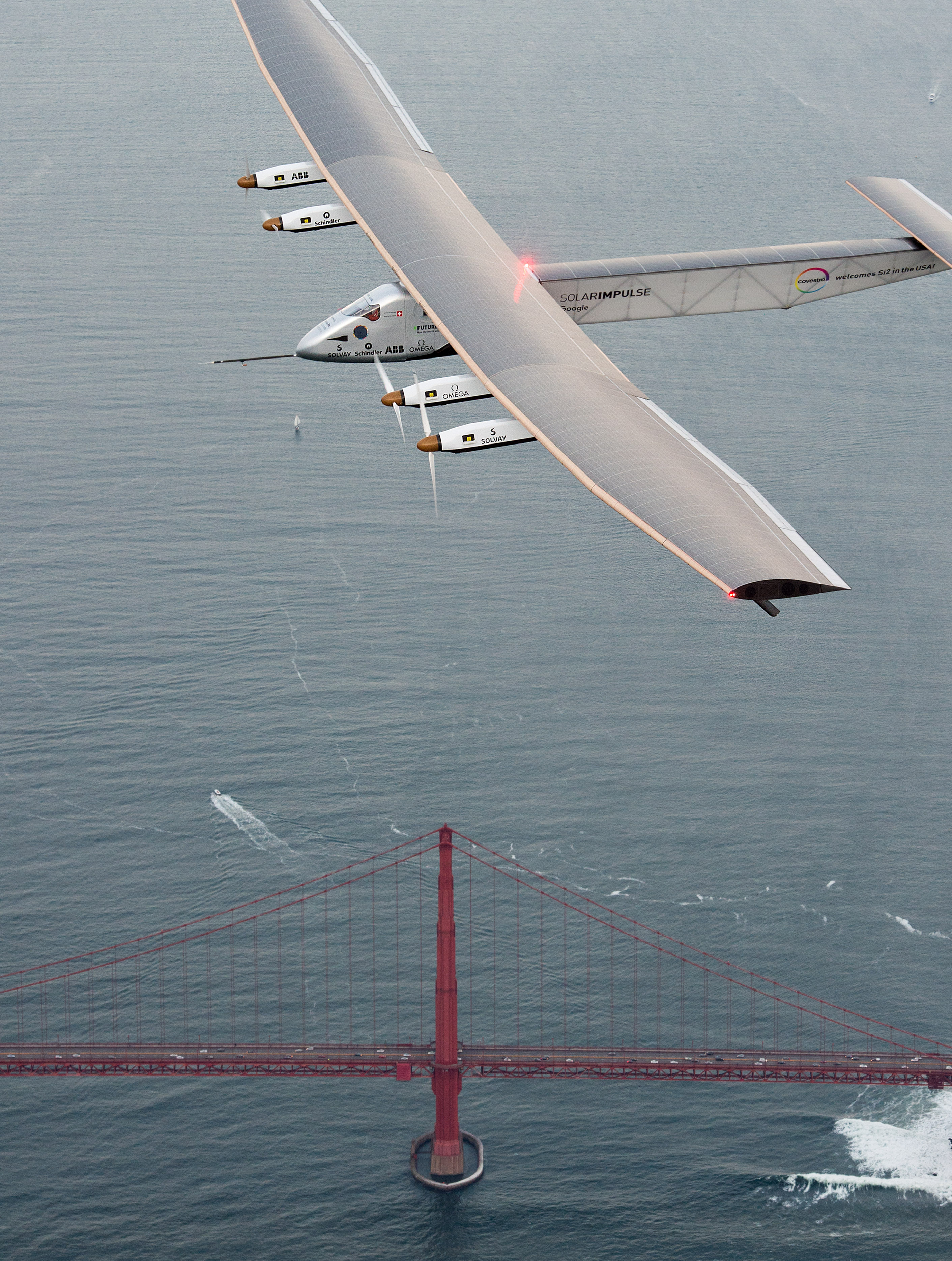
Solar Impulse 2 flies over the Golden Gate Bridge in San Francisco on Saturday, April 23, 2016. The solar-powered airplane, which is attempting to circumnavigate the globe to promote clean energy and the spirit of innovation, arrived from Hawaii after a three-day journey across the Pacific Ocean. (AP Photo/Noah Berger)
The Latest on a solar plane that landed in California after crossing the Pacific (all times local):
5:30 p.m.
One of two Swiss pilots taking turns to fly a solar-powered airplane around the world says the journey is not only a demonstration of the importance of renewable energy but also of the many challenges the human body can endure.
Pilot Bertrand Piccard completed a risky, three-day flight across a great expanse of the Pacific Ocean while sleeping only 20 minutes at a time inside the plane’s tiny cockpit with no heat or air conditioning. He also had to keep constant contact with the Europe-based control center.
Piccard said he uses self-hypnosis to keep his energy up and puts heating pads inside his shoes and gloves for warmth.
He said he has no complaints about the ready-made meals he can warm up with a special heat packet. They can include risotto, chicken curry and potatoes.
Piccard and the plane known as Solar Impulse 2 landed in Northern California late Saturday night after a 62-hour nonstop flight without fuel from Hawaii.
___
11:45 p.m.
A solar-powered airplane on a journey around the world has landed in California, completing a risky, three-day flight across the Pacific Ocean from Hawaii.
Pilot Bertrand Piccard landed the Solar Impulse 2 in Mountain View, south of San Francisco, at 11:45 p.m. Saturday following a 62-hour, nonstop flight without fuel.
The aircraft started its journey in March 2015 from Abu Dhabi, the capital of the United Arab Emirates, and made stops in Oman, Myanmar, China and Japan. The plane is attempting to circumnavigate the globe to promote clean energy and the spirit of innovation.
The trans-Pacific leg is the riskiest part of the plane’s global travels because of the lack of emergency landing sites.
Filed Under: Aerospace + defense




